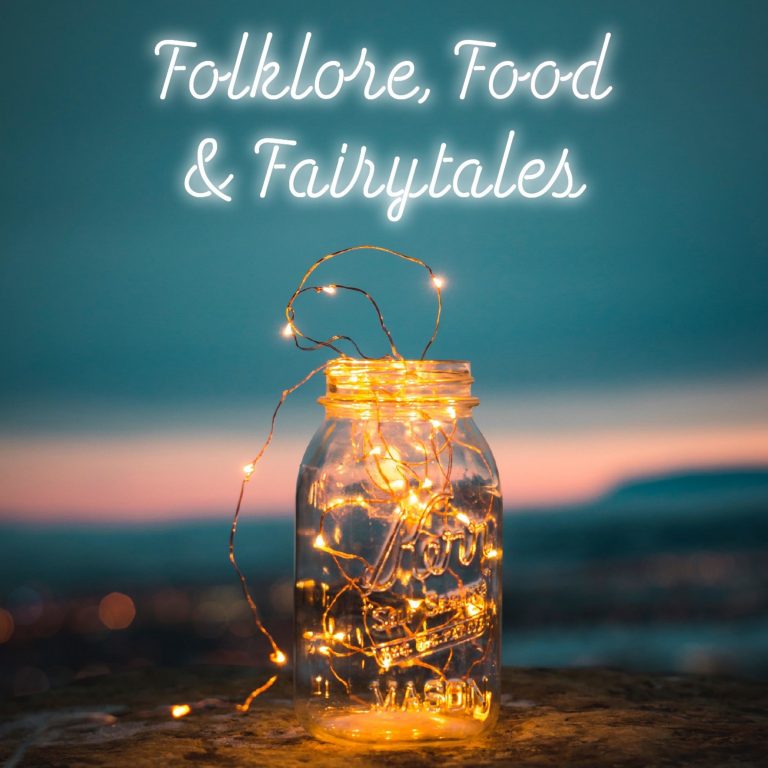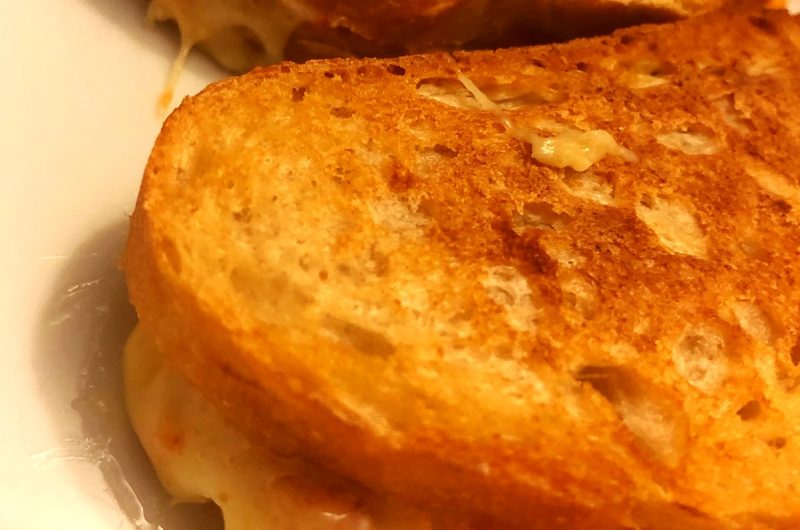In which we find that kindness, wit, cleverness and politeness are the keys to a wonderful future, the perfect cheese toastie is within your grasp and sometimes you have to make your own happy ever after.
In which we find that kindness, wit, cleverness and politeness are the keys to a wonderful future, the perfect cheese toastie is within your grasp and sometimes you have to make your own happy ever after.
A slight change to the usual format with two short stories instead of the usual longer one.
The original stories of Kate Crackernuts and The Three Heads in a Well can be found in English Fairy Tales by Joseph Jacobs
This week’s recipe for the Best Ever Cheese Toastie can be found on my blog.
Further reading list can also be found here.

Fortune-Hunters
I only read these two stories fairly recently and I was strangely fascinated by elements of both. I read versions from English Fairy Tales by Joseph Jacobs first and then went on to track down other versions and their sources just to see if they have changed a lot. They are both unusual in that the princesses (even the step-princesses) in the story go after their own fortunes (all except the one with the sheeps’s head but that’s understandable).
It would be a stretch to call them feminist tales as the fortune they achieve is marriage but that was one of only a couple of alternatives to women at the times these tales were shared. They are both too short for a full episode on their own but I like the juxtaposition of them together. As they both deal with two princess stepsisters with a wicked queen stepmother it was interesting to see how they differed from each other. One story is very much about the sisterhood (literally) whereas the other definitely isn’t.
Two Princesses, One Wicked Queen, One Hen-Wife & A Sheep’s Head
Let’s take a look at what makes them unusual starting with Kate Crackernuts. The first thing to note is that this is a Scottish story not an English one, Joseph Jacobs often played fast and loose with his geographical boundaries. Also Joseph felt that he should change the names of the princesses as he felt confusion would reign as they both had the same name. I have changed them back as I felt that was appropriate.
The start of the story with the queen, the sheep-head shenanigans and the ill-intentioned hen-wife is very unusual. The hen-wife does appear in other traditional tales from the British isles in a variety of forms ranging from wise-woman to witch but her role here is only slightly less limited than that of the wicked queen. I have to assume that this is because they had a certain amount of time to themselves. Those tales include The Three Daughters of King O’Hara; Fair, Brown, and Trembling; Childe Roland; and Catskins if you want to read more about hen-wives.
One Clueless King
The wicked queen in this instance has very little impact of the story apart from being the catalyst in the sheep-head incident. Unusually, as soon as Kate takes over the story she is never heard from again. No comeuppance, nothing, nada; in fact both princesses clearly don’t see the need to seek revenge once they are happily established. The king has even less of a role, clearly not even bothering to ask his wife where the girls have gone and why one of them had their head wrapped in linen.
One Dancing Prince
The second part of the story is where it becomes even more unusual. Readers of other fairytales may have noticed a certain similarity to The Twelve Dancing Princesses but with a gender switch and a reduction in numbers. There are some common elements but where the dancing princesses enjoyed dancing and outwitting their father this prince is clearly not enjoying himself at all. He has been enchanted to dance every night until he dies of the exertion. This dark version of the fairy dance is not unusual in British folklore and was often given as an explanation for what was actually a case of tuberculosis.
We do not know reason for the Prince’s enchantment but he may have just overlooked a fairy at the wrong time. There isn’t really room here but there is a lot of evidence to suggest that the peoples of the British Isles historically treated the fair folk with a healthy dose of respect laced with fear. They could and often did a lot of damage to lives and livelihoods (well the terrible things that happened were blamed on them at least). To quote the wonderful Terry Prachett:
“Elves are wonderful. They provoke wonder. Elves are marvellous. They cause marvels. Elves are fantastic. They create fantasies. Elves are glamorous. They project glamour. Elves are enchanting. They weave enchantment. Elves are terrific. They beget terror. The thing about words is that meanings can twist just like a snake, and if you want to find snakes look for them behind words that have changed their meaning. No one ever said elves are nice. Elves are bad.”
Lords & Ladies – Terry Pratchett
The Magic of Hazelnuts
So to nuts, I’ll make stretch and suggest that the nuts Kate harvested were hazelnuts. They grow very well in Britain and they have a lot of of folkloric significance. They denote wisdom and inner peace but more importantly a bag of nuts was said to prevent magical influences as was a twig of hazel in the hair. There is an awful lot more to hazelnuts in folklore but we haven’t really got time for that here. I may save this extra knowledge for Christmas time and then relay it at the same time as recommending a Ferrero Rocher or two (or a box, no-one is judging).
Agency & Kindness
We should also highlight the two really different things about this tale before we move on to The Three Heads in the Well’ . Firstly Kate chooses her Prince, not the other way around. She demands him in recompense for curing him before he even gets well. She doesn’t sit there and wait for him to ask her when he regains his usual senses. Secondly, the kindness of one step-sister to the other is not a frequent occurrence in fairy tales. The step sister is usually in collusion with their natural parent as in our second tale but here the Queen’s Kate is very unhappy with her mother and leaves her without a second glance to seek her fortune and help her step-sister. She achieves her fortune with cleverness, wit and kindness despite not being as pretty as her sister.
Three Heads in the Well
So on to our second story, The Three Heads in the Well. This contains a lot of traditional fairy tale elements and is I think the older story. A very similar story appears in Peele’s Old Wives’ Tales in 1595. This version appears in a chapbook from 17th Century but refers back to a time when there was a king in Colchester but suggests it was before King Arthur. This would have been post Roman invasion and pre the Norman conquest, probably around the 6th Century (there is a lot more fiction around about Arthur than there is fact). This is a murky time for historical records but would definitely have been pre 1066 (date of Norman invasion).
Fortune Hunting is A Popular Sport
This story behaves in a more traditional fashion, the stepmother and sister are unpleasant and ill-natured. The King marries his new queen for her money as he is at a bit of a loss for cash. The new queen just wants her daughter to inherit so she does everything to corrupt the King’s relationship with his daughter. She is successful; so far, so fairy story but this where there is a slight diversion as the Princess decides to pursue her own fortune rather than the queen trying to bump her off.
The story then moves on to demonstrate how being kind and generous gets you the good prince and being horrible and mean gets you a completely different ending. This again is traditional and forms part of the canon of ‘the kind and unkind girls’ fairytale type. This includes other well-known tales such as Diamonds and Toads, Morozko or The Spinning Woman by the Spring, examples occur in lots of cultures.
Is This The Moral you Were Looking For?
One way in which the story differs is that the kind sister does not receive anything for her kindness except the reward of marrying the prince which is usually a side benefit. The unkind sister is also not actually cruel to her new sister, just envious. She is the one who insists she could get a better fortune than her kind sister if given the chance and is not pushed into it by her mother. Another key difference here is the ending for the unkind sister. In these tales she usually suffers a gruesome fate from which she does not recover until the end of her days. In this story although she does not achieve riches, she is cured of her curses by a kind man who wants to help her. She does not have an unhappy life although her evil mother does meet a horrible end.
Still Looking for that Happy Ending?
I guess the moral of the story is kindness gets you a prince, rudeness gets you a cobbler but lets be honest, being beautiful also makes a big difference. I do feel though that the unkind stepsister does alright here despite her truly horrible mother. I’m not ashamed to say that if a disembodied head popped up at me from a well I’d be inclined to smack it with a sherry bottle. We can imagine if you like that after losing all her money and marrying a stranger, she develops a wonderful way of spinning thread which makes the most beautiful cloth imaginable and she she gets her own happy ever after……
Lets just take a quick side look at the significance of the three golden heads now just before we progress to our recipe. There is a lot of severed head folklore in Celtic mythology (see Bran the Blessed and King Arthur amongst others). The power of the head enhanced the qualities of the well/spring and vice versa. There were also stories of wells and springs in Christian myth that sprang up (sorry) where a saint lost his head.
There is Definitely Cheese in Your Future
So on to this week’s recipe. Will it involve sweetmeats, hazelnuts or even birds in beer? No we are heading straight for the bread and cheese. It appears everywhere in fairy tales, there are countless examples. Its sensible really, unless its really hot, hard cheese and bread travel very well and don’t go off quickly. They are also substantial an filling. If you could get someone to give you a pickled onion and some chutney you practically have a Ploughman’s Lunch. Bread and cheese together has formed part of the English diet since before the Romans, although the Romans did bring the technology for making large amounts of consistent quality cheeses. This is probably why it crops up in so many English and Celtic stories.
I make bread regularly (see earlier podcasts) and during lockdown made both a yoghurt and non rennet based curds and whey cheese. I could give you recipes for both and then you could equip yourself for lunch the fairytale way but I’m not going to, mostly because there are excellent recipes for both cheeses online. One of the reasons I’m not going to is that I know not everyone is up for making their own cheese even in a worldwide pandemic. The other is that strictly speaking neither of those are the hard cheeses with good keeping qualities. I picture a really good cheddar and sourdough (something I didn’t touch with a bargepole during lockdown).
The Best Cheese Toastie
This is basically a long winded way of me breaking it to you that today’s recipe is essentially the best cheese toastie you will ever make.
You need 5 ingredients: bread (wholegrain or sourdough if possible but at a push thick white sliced will do it), cheddar (preferably extra mature cheddar that has at least a passing acquaintance with a farmhouse but any well-flavoured cheddar will do although if you use mild cheddar we may need to have an important conversation), mayonnaise (the good Polish one if you can get it but Hellmans will do), concentrated tomato puree (the stuff in a tube or a tiny can) and English Mustard (it must be a strong hot mustard but I appreciate you can’t get Colman’s everywhere). The instructions are on the card below but do require either a grill (broiler) or a panini press/sandwich maker (like a George Foreman grill but without the lines).
The Best Ever Cheese Toastie
1
servings10
minutes10
minutesIngredients
2 slices bread (substantial for preference)
Extra Mature Cheddar thinly sliced – enough for a generous sandwich
1 tablespoon concentrated tomato puree
1-2 tblsp rich mayonaise
1.5 teaspoons English mustard or other hot strong mustard
Directions
- Toast the bread on one side only
- Apply a thin scraping of mayo to the toasted side of the bread
- Apply a thin scraping of tomato puree on one slice on top of the mayo
- Apply a thin scraping of mustard on the other slice on top of the mayo.
- If you are cooking under the grill apply half of the cheese to each slice covering the condiment mixture. Then put the slices cheese side up under the grill and grill until melted then put the two cheese sides together. Cut in half and serve.
- If you are making in a sandwich press just add the cheese to one slice, placing the other bread slice on to, condiments facing down onto the cheese. Toast until the cheese is starting to melt out the sides of the sandwich. Cut in half and serve.
Further Reading
English Fairy Tales by Joseph Jacobs
English Fairy Tales, by Flora Annie Steel, Illustrated by Arthur Rackham
Popular Rhymes and Nursery Tales by J. O. Halliwell-Phillipps
https://en.wikipedia.org/wiki/Kate_Crackernuts
https://digital.nls.uk/chapbooks-printed-in-scotland/archive/108808854?mode=transcription


